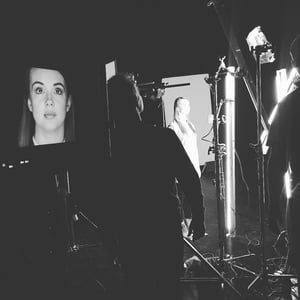Video campaign metrics and Key Performance Indicators (KPIs) aren’t the sexiest aspect of our industry. In a world full of creative ideas and ingenious technologies, it can be easy to forget that maths underpins everything we do.
Nevertheless, the right video campaign metrics can open doors to increased budgets, bigger campaigns and attention from the most important people in your business. So bust out the calculator, as we talk you through three essential metrics you should always be measuring.
Why is measuring your video campaign so important?
You can spend hours and hours crafting the perfect video campaign, giving your blood, sweat and tears to a project which your team admires and your audience adores. However, if your brand doesn’t see financial returns, they may decide they’ve made a bad investment. are the scaffolding that determine whether your
For this reason, it’s important to identify video campaign metrics that will help you reach your key business goals. Crucially, agree on these before you step a foot in the studio. Identify the key metrics that matter to your business, and identify the results expected from your campaign. If they seem unrealistic, now is the time to question them.
What video campaign metrics really matter?
With such a huge variety of data available to digital marketers, it can be easy to fall into the trap of collecting vanity statistics. These are figures which, while pretty, do not really reflect anything meaningful.
For instance, ‘market reach’ determines how many people may have seen your content. While this number may be big and look impressive on first glance, in reality it bears no relation to actual engagement or conversion. Think about the number of adverts and social media posts you scroll past every day – how many do you actually give a second thought?
Start your video marketing campaign on the right foot by taking the time to consider the end goals of your campaign. For instance, are you looking to increase brand recognition, generate website views, or promote lead conversions on a specific campaign? Once you know what goals you’re aiming for, it’s easier to decide which metrics to track.
Video campaign metrics and KPIS should help you understand the content’s effectiveness and calculate the Return on Investment (ROI) generated. In other words, tangible results.
1. Views
Before a viewer can fall in love with your video content, they need to choose to watch it in the first place. To better understand how many people are engaging with your video content, views are one of the easiest methods of measuring your video campaign.
However, this metric can differ across different video platforms. For instance, a video only takes 3 seconds of viewing to count as a view on Facebook, whereas it will take 30 seconds of playtime on YouTube. For this reason, you need to consider where your video content will be shared before you set any goals.
For marketers looking to diver deeper, video engagement metrics can show how long viewers stay on a video, or how much of the video your viewers get through on average. This can help to identify any weak points which lose your viewer’s attention, and confirm whether viewers are making it to the end of your video to click a call to action (CTA).
2. Click-throughs and conversions
Ideally, your video content is aiming to influence the viewer in some way. Depending on your goals, click-through and conversion rates can be critical video campaign metrics.
If your goal is to attract leads to learn more about your brand and products, it’s important that your click-through rate is high. In many cases, a conversion rate will be your ultimate measure of success, demonstrating how many new contacts or sales were generated.
If you have a low click-through rate: Is your call to action clear, and tempting enough to convince people to click?
If you have a low conversion rate: Is your landing page clearly communicating the offer, and is the point of conversion easily accessible? (For instance, long forms can be a turnoff)
Setting, tracking and reporting on KPIs such as click through rates and conversion rates will help you to identify weak points and improve your campaign over time.
3. Social media spread
Now more than ever, video campaign metrics are determined by social media success. Brands are forever in hope of content ‘going viral’, but do you really know what this means?
Ideally, you want to create video content that is liked, commented on and shared across multiple social networks, spreading your brand message to millions of people, with little to none of the work falling to your team.
Essentially, a high rate of social sharing means that your content is of such high value to the viewer, they are willing to actively distribute it among their own social media connections. It’s the ultimate compliment when you think about it. And when one viewer from your target audience shares your video across their social channels, chances are other potential consumers will be watching.
If the thought of measuring your video campaign metrics still breaks you out into a cold sweat, don’t panic. Before we start work on any campaign, we sit down with clients to tackle a bunch of practical, organisational and creative considerations. We’re happy to provide our expert opinion, and support you in creating top-performing content.









